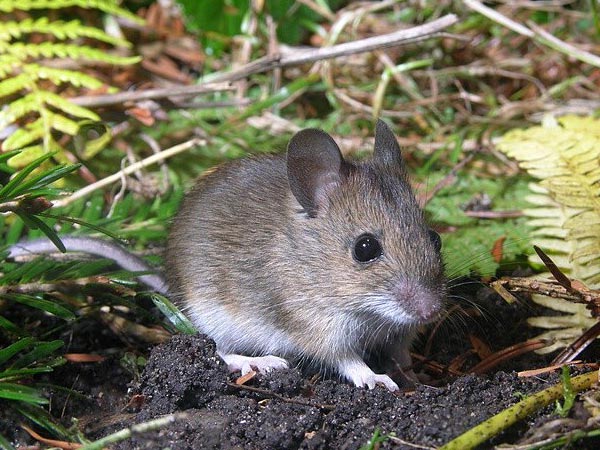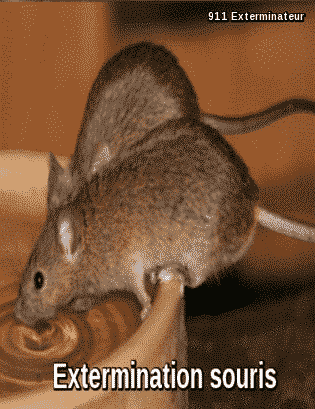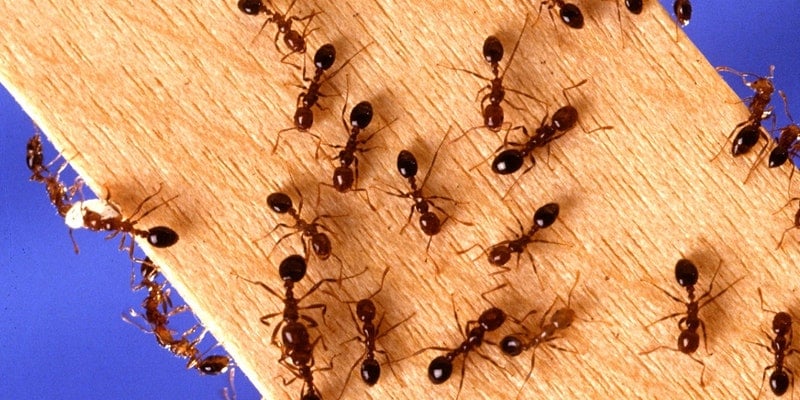Field mouse or house mouse?
Field mouse or house mouse?
The house mouse
| Latin Name: | Mus musculus |
| Family | Muridae |
| Length: | 6 to 10 cm approximately (tail + 10 cm) |
| Weight: | 20 to 50 g |
| Color: | Black, gray or white |
| Types of mice in Quebec: | - Gray (the most common) - Straps - Sylvester - Waterfalls - Sitka Mouse - Harvester Mouse - White-footed Mouse |
VS.
Field mouse
| Scientific name : | Apodemus sylvaticus |
| Weight: | 15 to 30 g |
| Length: | 9,5 to 11 cm |
| Family | Muridae |
| Order: | Rodents |
| Longevity: | 18 to 20 months |
Common characteristics to rodents
The term rodent comes from the fact that all share two common characteristics, firstly they all belong to the class of mammals and secondly they both have incisors that grow indefinitely. Rodents without enamel and their incisors are very fragile and easily destroyed but will always grow back. This growth of teeth explains why some rodents like rats gnaw wood when they have no other foods to wear down their teeth. Otherwise, they risk ending up with their lip pierced by their own incisor or even not being able to close their mouth, which will lead to a slow and painful death.

What is a field mouse?
The field mouse is distinguished by its brown, beige or red coat with a white belly and its adult size which allows it to reach within 10.5 centimeters. It generally has a weight of about 13 to 27 grams. His eyes, however, are smaller than those of a house mouse.
Regarding its diet, the field mouse feeds according to the season. The field mouse nevertheless remains an omnivore because its diet is very varied. It can feed on insects such as cockroaches, also on shelled gastropods such as snails and even invertebrates such as earthworms. On the other hand, it can also feed on plants, seeds, mushrooms, certain vegetables such as carrots etc.
Despite this, the lifespan of a field mouse is only one year but its reproduction is very rapid. In one year a field mouse can give birth 3 or 4 times and each time between 3 to 6 young. The field mouse is generally more active at night than during the day.
Do you have a field mouse problem requiring extermination? see here.
What is a house mouse?
The houser mouse, unlike the field mouse, has a uniform coat that is generally gray or brown in color and has an adult size of about 7 to 9 centimeters. It usually weighs around 12 to 30 grams. This mouse has big eyes, big ears, tiny legs, and a tail the same length as its body itself.
The diet of the mouse is like that of the field mouse extremely varied. She can feed on vegetables, fruits, gastropods, meat, but above all she likes cereals and seeds.
The house mouse, unlike the field mouse, has a life expectancy ranging from 2 to 3 years. The reproductive capacity of a house mouse is greater than that of the field mouse. Indeed this mouse will give birth to 4 to 16 babies and this 7 to 8 times a year, which is simply enormous. Both the house mouse and the field mouse are more active at night than during the day.

Frequently Asked Questions
The field mouse, which should not be confused with its neighbors like the vole or the shrew, is also part of the rodent family. Its diet is therefore specific. It feeds mainly on seeds, berries (raspberries, blackberries), but also roots such as carrots, turnips, celery, or potatoes. You can add almost any garden vegetable: leek, chicory, Swiss chard.
Like most rodents, mice eat almost anything. Seeds, fruits, vegetables etc. But she also has an appreciation for so-called human foodstuffs. A mouse in nature will be satisfied with wheat, corn or even barley. On the other hand, those who live near a dwelling will, in addition to the products mentioned, eat bread, cheese, granules and any other product that they find.
Mice leave the natural environment to take refuge in the vicinity of dwellings and even inside as soon as they can. It is a shelter and a source of food that they seek. The presence of dirt around a dwelling can attract mice in the hope of finding a food source. Although mice also enter clean places, dirt makes them more likely to proliferate.
The majority of rodents, including field mice, rats and mice, do not hibernate. They are very different from other species such as marmots or dormice, which hibernate during periods of bad weather. The field mouse, for its part, remains completely active, always looking for what to eat in all seasons of the year.
Mice, the majority of small rodents as well, have small claws at the ends of their lower and extra legs. These claws give them the ability to cling and climb: on walls, trees, garden plants and more. They have an anatomy that allows them to operate their different legs independently, which aids in their ability to climb.
It is true that mice have a very varied diet, but cases of cannibalism in mice are unlikely. Mice are fond of fruits, vegetables, roots, seeds, bread, pellets and some products for human consumption. What may be probable or possible is that a mouse eats the dried up remains of another mouse.
Before thinking about exterminate field mice and mice, we can think of ways to repel them away from home. Although these rodents are garden pests, they participate in some way in maintaining the ecosystem. You can keep field mice and mice away with bunches of mint that you plant in your garden or put in their path. See other natural ways here.


